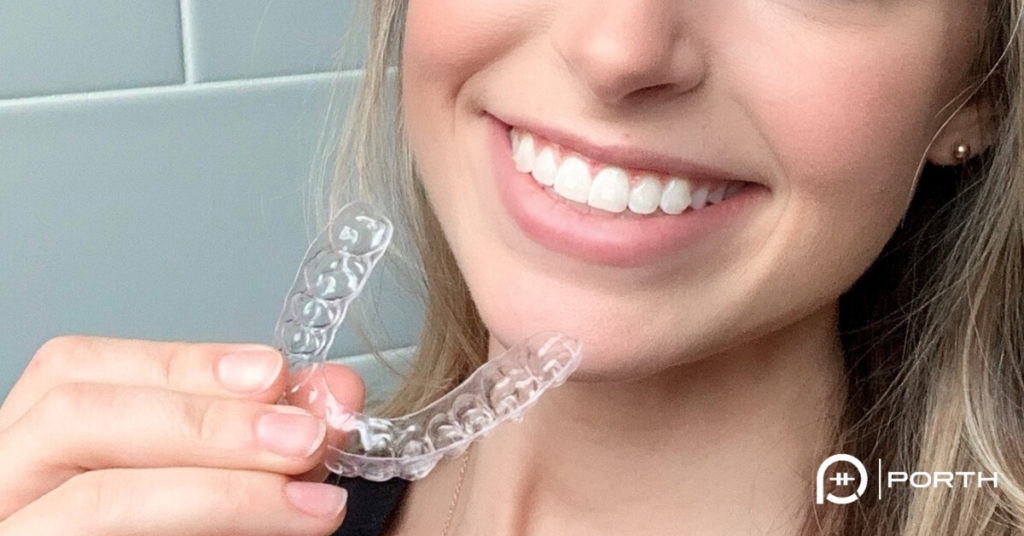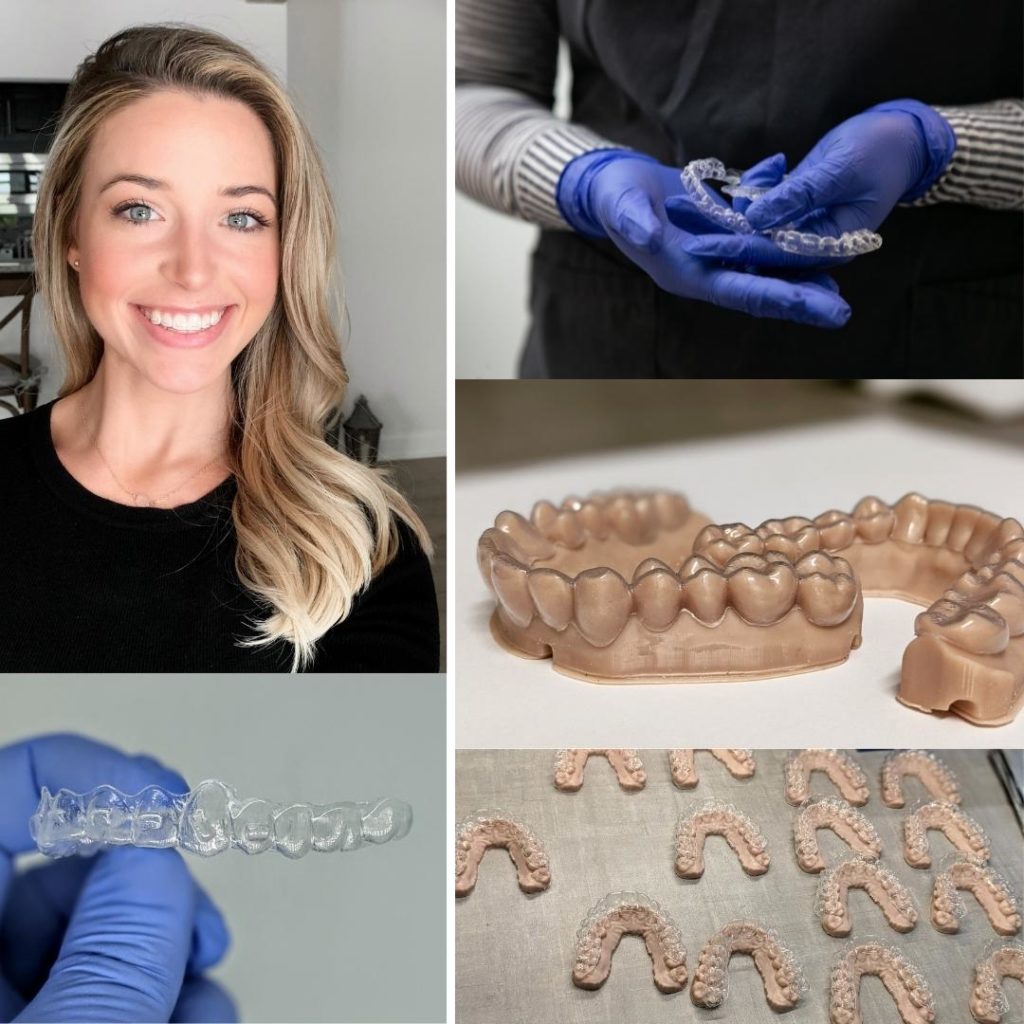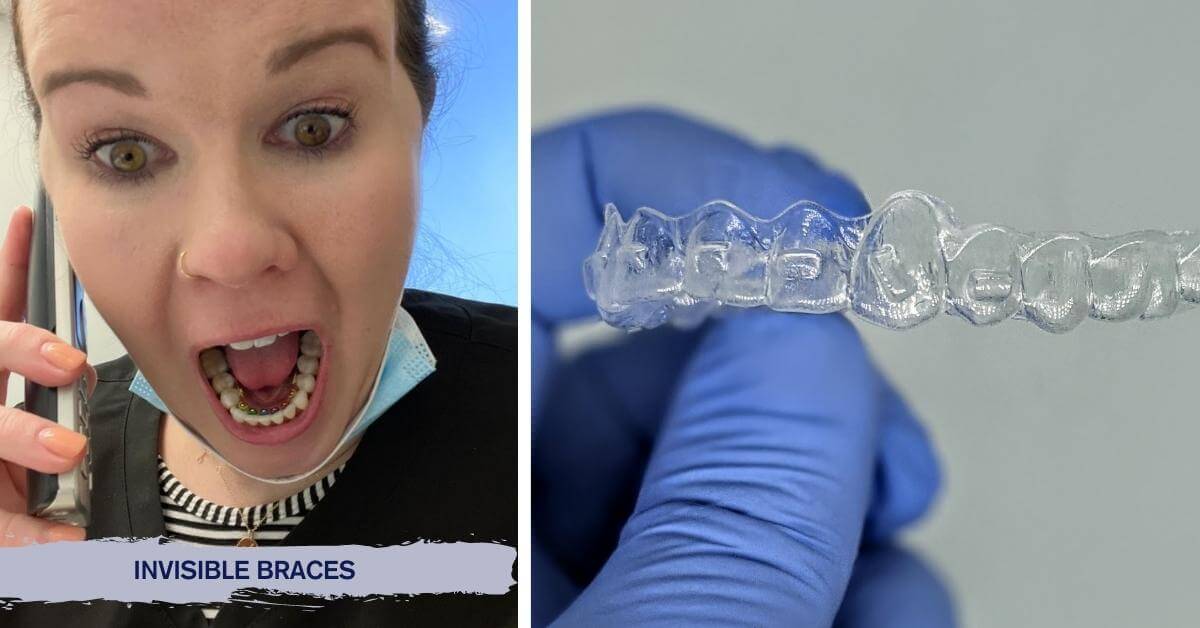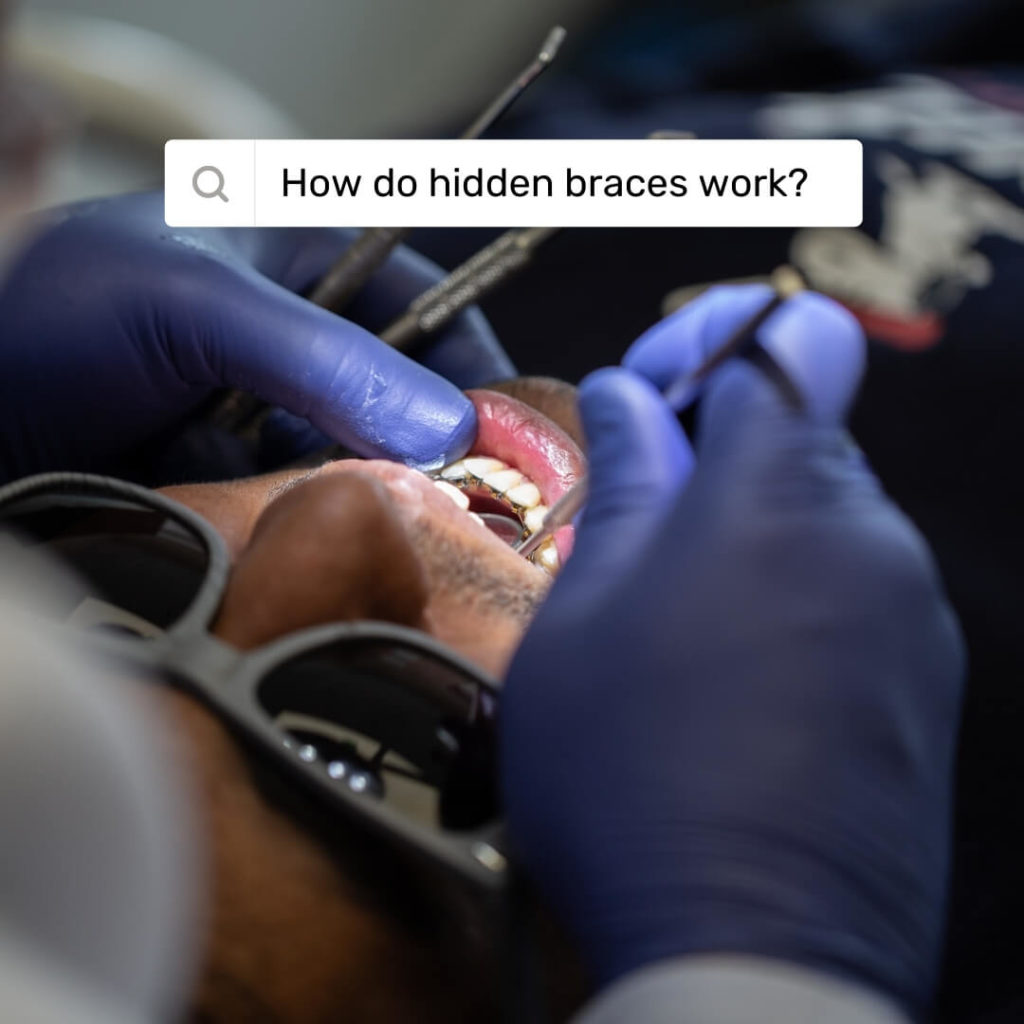Orthodontist
When it comes to straighten your teeth, orthodontists are specialized to move teeth. You will get multiple treatment options as part of your first office visit. This will include the collection of digital molds and 3D xrays as well as the discussion around average treatment time and the cost of the orthodontic treatment (down payments and insurance plans coverage). Most of this first office visit for new patients are in-person.
To provide orthodontic treatment, orthodontists use various type of appliances and approaches – ranging from clear plastics to traditional metal braces.
Traditional braces treatment, often known as metal braces, are the most common appliances used to straighten teeth. Metal brackets are unpopular in patients seeking for an esthetic care. The term invisible braces collectively refers to different type of orthodontic appliances that are less noticeable -e.g., Invisalign treatment. Overall the invisible braces are either fixed and glued to your teeth or they are removable custom-made plastic trays.
Invisalign
Invisalign is the brand name of clear aligners manufactured by the Align Technology. This appliance has been the oldest CAD/CAM aligners (approved by FDA) on the market hence the term Invisalign is interchangeably used with clear aligner treatment.
The Invisalign system offer various packages including Invisalign First, Teens and adults. Advances in orthodontic field introduced a slew of teeth straightening clear aligner systems. Invisalign aligners are not the only aligner options out there these days.
Clear aligners can be used to correct crossbite, underbite, crowded teeth, spacing and build straight teeth.

Invisible aligners
Clear aligner treatment is a great choice for straightening crooked teeth or fixing overbite. Plastic aligners are great choices for the right patient. Good candidates of aligner therapy are committed to wear their aligners around 22 hours a day and maintain a great oral hygiene.
Aligner treatment is offered by orthodontists, dentists and mail order companies. The cost of treatment varies based on who is offering the treatment. Treatment plans and treatment time are also different which leads into different quality of smile. Most insurance companies cover part of the aligner treatment. You can also setup monthly payments, use your FSA or HSA to use your payment plan and payment options.
Lingual braces
The truly invisible braces are lingual braces. They are glued in the back of your teeth and move your teeth behind the curtain. Numerous lingual braces system are available to the limited number of orthodontists that offer this treatment. Incognito, SureSmile, Brius, and Alias are examples of these systems.
The main advantage of lingual braces vs Invisalign (clear aligners) is that patients don’t need to keep track of wearing aligners and being worried to lose them. Lingual braces like other appliances can result in lisps.
Clear Braces
Alternative options for metal braces are clear or ceramic braces. They are partially invisible. Most of clear braces are bulkier than their counterpart metal braces. They are also fragile and can chip or shatter during treatment.
Invisalign Dentists
Some dentists (DDS/DMD) offer orthodontic care at their clinic. Majority of general dentists use the Invisalign appliance to move teeth. Clear Correct and Suresmile Aligners are alternative appliances that they use. Most of treatments rendered by dentists is limited to mild malocclusion.
Dentists knowledge on orthodontics is often limited to the general dentistry taught in dental school and weekend CE courses.

Direct to consumer
One of the options for a straighter teeth and a new smile is aligner treatment through box companies. The biggest promise of this option is saving money and avoiding in-office visits which could not be necessarily the case if you don’t get the results you are looking for.
At PORTH, we offer aligner treatment to many patients that abandoned their treatment plan with box orthodontics. Direct interactions with an orthodontist for medical advice and regular checkups are keys to success with teeth aligners out of a box.
Smile Direct Club
The pioneer company for box or mail order orthodontics is Smile Direct Club. You would get an impression kit at home and send it to get your set of aligners. You switch to your new aligners biweekly and hope to get the outcome you need. Minimum to no supervision on status of oral health and gum disease by a healthcare provider is the biggest issue with this option.
Candid
Candid co is the most known company after SDC that used to offer box orthodontics. You can read more about our interaction with patients looking for candid aligners. The new model of candid co is where a dentist or orthodontist offer the care and the aligners are fabricated by the company. This new service is called Candid pro.
FAQ about Invisible Braces
Invisible braces, such as clear aligners like Invisalign, are made of transparent plastic materials that fit snugly over your teeth, making them virtually undetectable when worn.
Traditional metal braces consist of metal brackets and wires that are bonded to the teeth and are more visible. Invisible braces are often more comfortable, removable, and easier to clean compared to traditional braces, but may not be suitable for all types of orthodontic issues.
The treatment time for invisible braces varies depending on the complexity of the orthodontic issue being addressed and the patient’s compliance with wearing the aligners as prescribed.
On average, treatment with invisible braces can take anywhere from 6 to 24 months. However, it’s important to follow your orthodontist’s recommendations and wear the aligners for the prescribed amount of time each day to achieve the best results.
Invisible braces are suitable for a wide range of orthodontic issues, such as mild to moderate crowding, spacing, overbites, and underbites. However, they may not be the best option for more severe or complex cases, which may require traditional braces or other orthodontic treatments.
A dental professional will be able to determine if you are a good candidate for invisible braces based on your specific needs and dental health.
The cost of invisible braces varies depending on factors such as the severity of the orthodontic issue, the type of invisible braces used, and the duration of the treatment. In general, the cost of invisible braces can range from $3,000 to $8,000.
This might not be included the cost of retainers and lifetime guarantee of the treatment. Many dental insurance plans cover a portion of orthodontic treatments, including invisible braces, but it’s essential to check with your insurance provider to determine the extent of the coverage. Additionally, you may be able to use flexible spending accounts (FSA) or health savings accounts (HSA) to help cover the cost of treatment.
Yes, you can use teeth whitening and whitening kits during your clear aligner treatment, but it’s important to follow specific guidelines to ensure the safety and effectiveness of both treatments. First, consult with your orthodontist or dentist to determine if teeth whitening is appropriate for you during your aligner treatment. They may recommend waiting until after your orthodontic treatment is completed, especially if you have dental issues like cavities or gum disease.
If your dental professional approves teeth whitening during your clear aligner treatment, choose a reputable and clinically tested whitening product. Keep in mind that whitening strips or trays are generally not compatible with clear aligners, as they may not fit properly or may cause uneven whitening. Instead, consider using a whitening toothpaste, gel, or pen that can be applied directly to your teeth without interfering with your aligners.
Always remove your clear aligners before applying any teeth whitening product, and follow the manufacturer’s instructions for use. After completing the whitening treatment, thoroughly clean your teeth and aligners before reinserting them. Remember to maintain good oral hygiene throughout your clear aligner treatment to achieve the best results and maintain your brightened smile.

